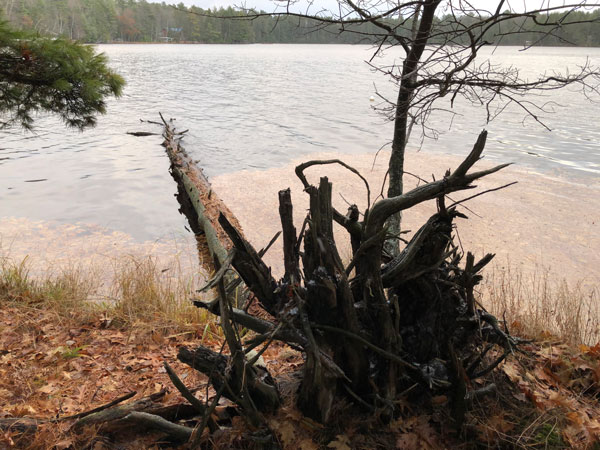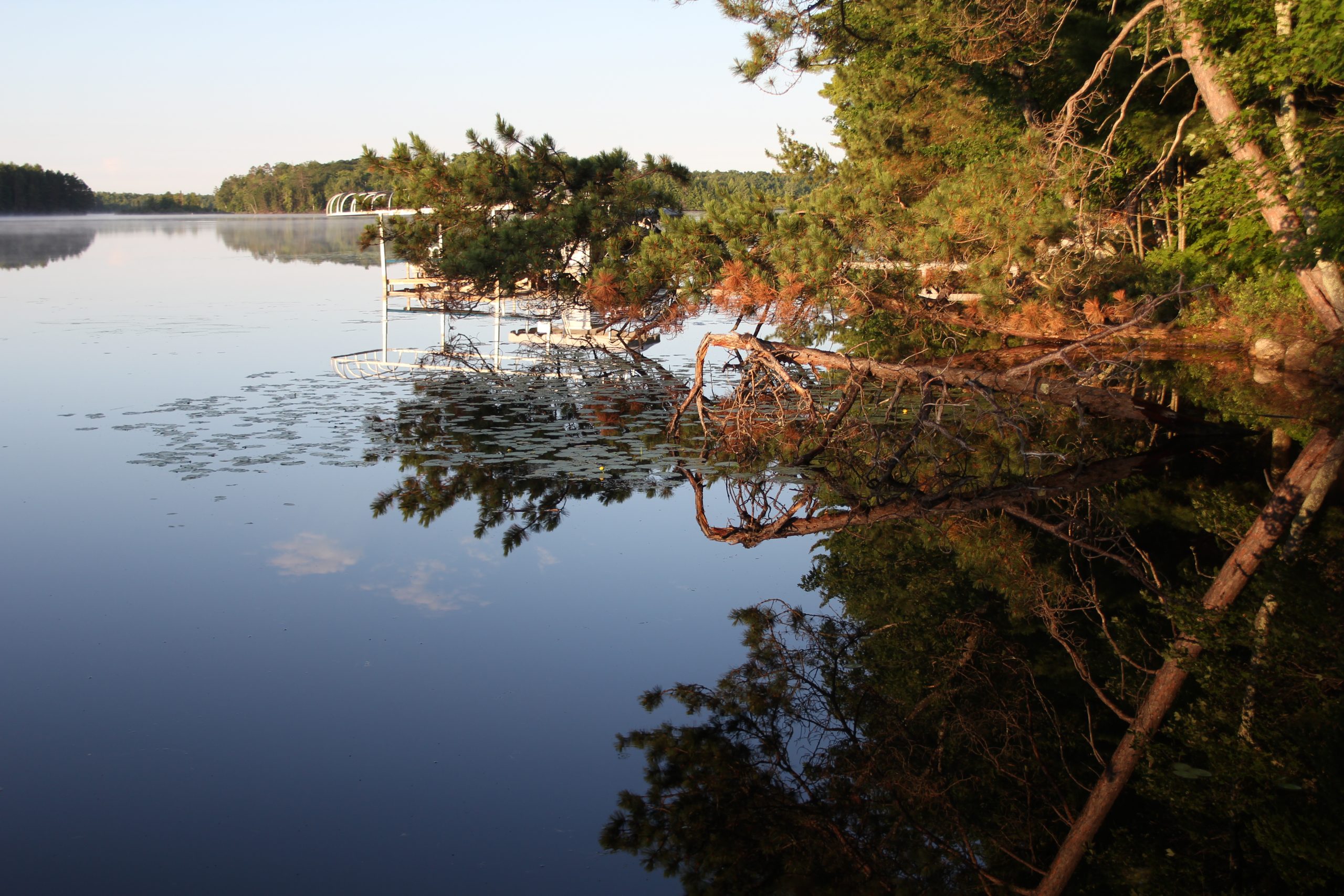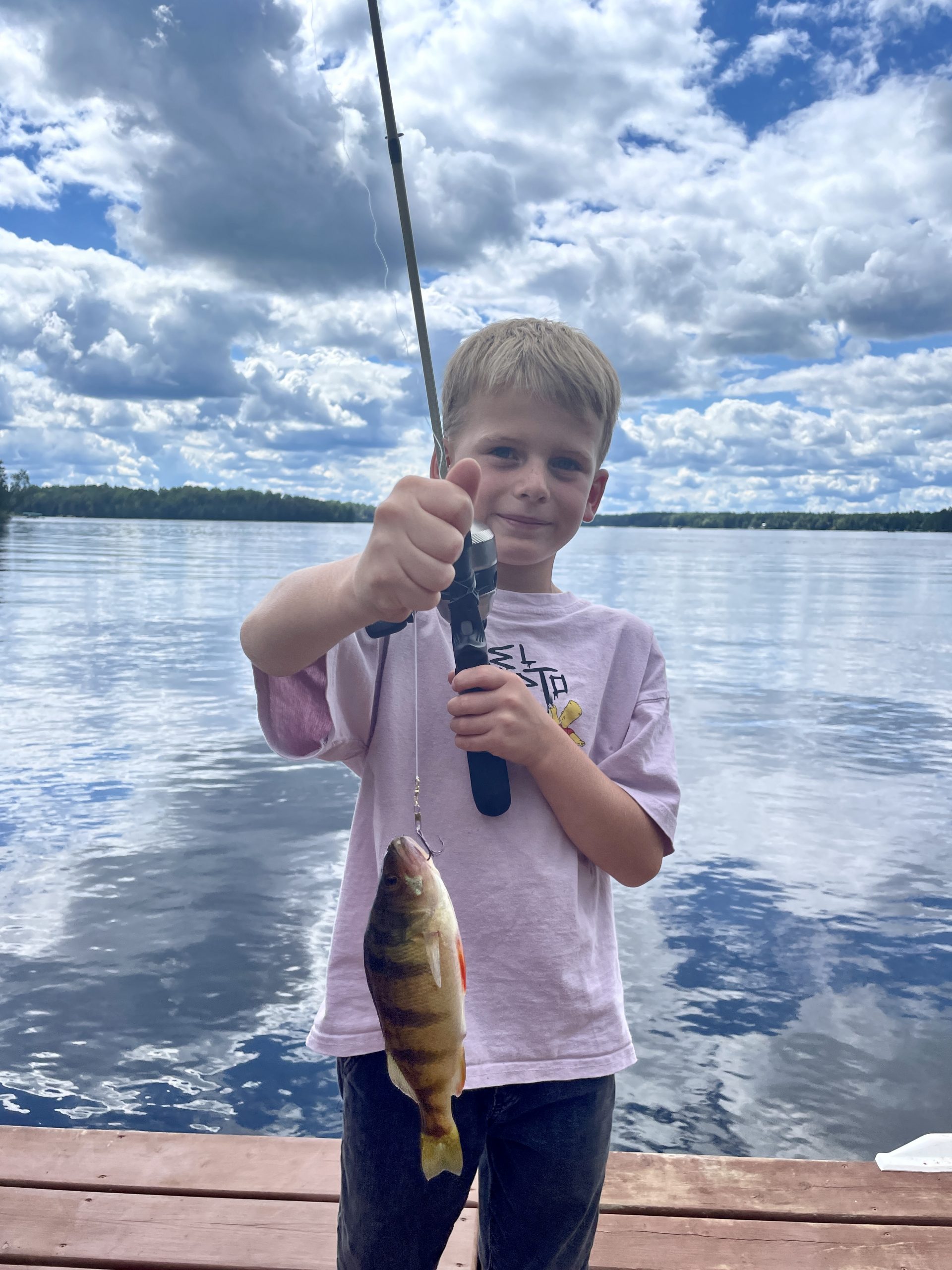Fish Sticks & FIshing
Fish Stick Projects expand fish habitat in lakes and protect shorelines

Fish Sticks
As part of the largest series of connected freshwater lakes in the entire world TLWA is doing our part to assure a healthy fish population in the Three Lakes Chain. Fish Stick Projects restore woody habitat in lakes by adding trees anchored and partially or fully submerged in the near-shore area. They provide opportunities to anglers by expanding fish habitat and also protect shorelines.

partnering with fish & wildlife
The TLWA has been working together with the Three Lakes Fish & Wildlife Association to install fifteen sites since December 2019. This process requires a permit via the DNR and an inspection by our local Oneida county fish biologist Nathan Lederman to ensure all requirements are met.
In the winter 2023, Jason Pertile from the Three Lakes Fish & Wildlife Association offered to become our new Fish Stick Coordinator. After he single-handedly installed two sites when no one else was available, we consider ourselves honored and privileged to have his commitment to this important program. The Three Lakes Fish and Wildlife Association will continue to help install fish sticks as the TLWA recruits members to volunteer shorelines for duty.



improve the fishery by creating habitat
Fish Stick site suitability is a balancing act of being able to navigate watercraft and have swimming areas on one hand, while creating habitat to promote shore restoration and improve the fishery. We encourage lakefront property owners to inspect their shoreline for dead, deceased or problematic trees that need felling and might be Fish Stick candidates. Our team will gladly inspect and assess the potential of your site and/or if you are interested in helping to install future sites contact Gerry Oehman at gfoehmen@gmail.com.
Additional information on fish sticks and the fish sticks implementation process are available in the following links: Fish Sticks Best Practices Manual Wisconsin Healthy Lakes and Rivers Fish Stick – Fact Sheet Fish Sticks – Technical Guidance
fISHING THE cHAIN
TLWA does not conduct fish studies nor fish-related projects in the Chain. The WDNR studies fish on the Chain every year and the results are available on their website (https://dnr.wisconsin.gov/topic/Fishing). That being said, we are big fans of fish and would be remiss to not brag about one of our area’s greatest resources.
Three Lakes and Eagle River Chain of Lakes – Reprinted from fishassist.com
Fishing: Due to the large size and health of each lake in the Three Lakes and Eagle River Chain Lakes, game fish communities are able to grow and expand. Because of this, nearly all of the main species of these chains of lakes are readily available for fishermen to catch. Some of the primary species of Three Lakes and Eagle Chain of Lakes include muskie, walleye, perch, crappie, smallmouth bass, northern pike, bluegill, sunfish, and rock bass.

The muskie is the trophy fish of these bodies of water. This species is commonly targeted by the likes of seasoned fishermen who wish to find the ultimate fishing challenge. In order to capture this species, anglers should travel to one of the numerous deep lakes. Big Stone Lake, Spirit Lake, Eagle Lake, and Planting Ground Lake are all excellent bodies of water to target muskie. Once in an ideal fishing location, anglers should equip their medium to heavy weight rods with dark colored lures and lines with a test of at least 20 pounds. Dark lures are easy for both the muskie and the fishermen to track. Once a muskie begins pursuing a lure, the fishermen should either maintain or slightly increase the reeling speed. Increasing the reeling speed may encourage the muskie to strike.
Walleye can also be found throughout the chain of lakes. During the spawning season, smaller walleye can be found near the confluence of two lakes and shorelines. This species can be caught in deeper waters throughout the remainder of the year. Rangeline Lake and Watersmeet Lake are both great locations for walleye fishing. Deep diving crankbaits and spinnerbaits are among the most successful tackle options for this species. Walleye are commonly captured between 5 and 7 pounds, but they are also occasionally weighed in near 10 pounds.
FISH FISH FISHING – I’M GOING FISHING
Crappie also offer excitement to fishermen at the Three Lakes and Eagle River Chain of Lakes. This species is commonly found in the shallow waters throughout the chain of lakes. Voyageur Lake and Crystal Lake are excellent locations to target crappie due to the shallow water and presence of weeds, submerged timber, and other ideal habitats. Anglers who decide to target this species should use light tackle or a fly rod. Ideal baits include nightcrawlers, crickets, and minnows.

The northern pike is a species that many challenge seekers will surely find to be an enjoyable target. Northern pike can be found in deep weed beds and open waters throughout the entire chain of lakes. Whitefish Lake is among the most notable areas of pike fishing. In order to catch this species, anglers should use spoons, spinnerbaits, and buzzbaits. Trolling the open waters at speeds of 2 to 5 miles per hour is also a wise option.
The smallmouth bass populations will also bring excitement to the fishermen of the Three Lakes and Eagle River Chain of Lakes. This species can be found in high abundance in the same locations as crappie and other panfish. Shallow lakes such as Scattering Rice Lake and Lynx Lake provide the perfect habitats for smallmouth bass. This species can be effectively targeted using jigs, bobbers, crankbaits, and fly rods.
Fishing guides are recommended to increase your success. The seasoned anglers only fish when the fishing is good and rely on their criteria as well as chatter from their fishing buddies.
A good source for fishing knowledge is Jason Pertile (751-891-2098 - Up North Guide Service)
